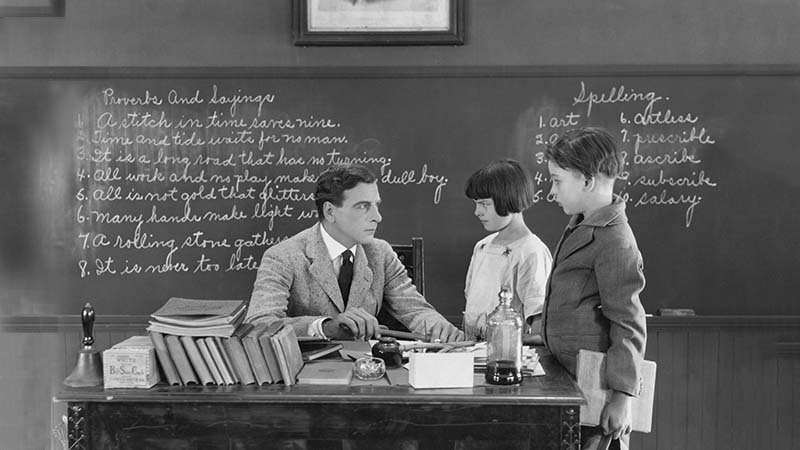Every student comes to class with preconceived notions. Sometimes, information they have gathered from parents, friends, or the internet is correct—and sometimes it is not. When a student says something in class that simply isn’t true, it is the teacher’s challenge to correct the misconception in a way that not only inspires that student to keep learning, but also enhances learning for the rest of the class. To do this day after day and year after year, teachers look to sustainable initiatives, technology, and digital curriculum solutions to support them.
Here are three educators’ tactics for turning a redirection into a teachable moment.
Nicole Galipeau: Challenging Personal Bias in K–5 Students
One of the most important things we can teach young researchers is to challenge their own preconceived notions about the world. The process of research can be a great way to reveal and address these preconceptions, particularly in young learners.
My students range in age from 5 to 12 years old, so it’s understandable that they will have very specific background knowledge that is based on their subjective personal experiences, rather than based on research and the combination of reading, writing, and discussing nonfiction or informational texts and online sources.
The most common misconception that my students have while doing research is thinking that their personal background knowledge is more accurate and credible than a high-quality and educator-vetted nonfiction source. Recently, my students were using the PebbleGo database to practice researching a nonfiction topic of their choice. While one of my 1st-graders was explaining her research notes to me, she authoritatively told me, “Chihuahuas don’t bite.”
My student was 6 years old, and her family has a Chihuahua who is a friendly pet, and who has never bitten anyone. Because of this experience, my student believed that Chihuahuas, as a breed, do not bite anyone, ever. As the student and I talked about her research, I asked her to show me where in the text she had learned this “fact.” She showed me the section titled “Body.” We re-read the text together. While it’s true the section contained information about Chihuahuas’ bodies, there was nowhere in the text that said that Chihuahuas do not bite. When I asked why she would write a note about information that she did not learn from our nonfiction source, she said, “Well, I know it’s true. Chihuahuas don’t bite.”
The challenge in situations like this one is to gently correct misconceptions with accurate nonfiction text and online sources while still fueling students’ curiosity. For instance, while it’s not true that Chihuahuas don’t bite, we can discover other interesting facts about Chihuahuas that make them a unique dog breed.
Even as adults, we each have misconceptions about certain topics. We’ve all had experiences that have shaped the way we view the world, regardless of whether or not these experiences accurately reflect the world at large. That’s why it’s so important to learn at a young age to always keep an open mind, and challenge our personal biases. Otherwise we might miss out on new learning opportunities.
Dr. Janice Kelly: Using a Classroom Audio System to Redirect Collaboration
Every day, I am able to target misconceptions as I hear them and give students the opportunity to share their expertise with their fellow students. In my 5th-grade science and social studies classes, we take an inquiry-based approach, so much of what students do involves collaboration: brainstorming activities, group discussions, group project development, and group experiments.
As students converse in their small groups, I use the Lightspeed Flexcat system, which includes a wireless microphone and two-way audio pods. Students are free to talk amongst themselves, revealing their involvement, understanding, and misunderstandings. If I need to, I am able to communicate with them without intruding on their “space.” There are times when a teacher’s presence in students’ workplace hinders what they are willing to share. I appreciate that they are free to “call” me and ask questions they may not be willing to ask in a large group. The system gives their group a sense of autonomy within the classroom.
Being privy to students’ group conversations allows me to facilitate conversations where one student teaches another—or even the whole class. In class one day, I was listening to a group discussing light. One student remarked that animals don’t give off light. Another student began to explain that there were some living things that are bioluminescent. I took advantage of the opportunity for him to share his knowledge of bioluminescence by using the Flexcat pod’s microphone. He proceeded to explain to the entire class, in effect become the teacher. These are the moments that give students ownership of learning and the classroom.
Tammy Mangus: Helping Struggling Students Read through ‘Truthful Kindness’
As part of my mission to see that no student falls through the cracks, all are greater than average, and everyone graduates knowing how to read, I developed an idea called “Truthful Kindness and Necessary Action” to help me balance objective reporting and empathy for students.
In my district, we talk a lot about being kind to students. While my teachers are extremely kind, there are situations where students are what I call “compassionately rescued” from their struggles. In other words, teachers may be allowing struggling students to slide through, or are rescuing them from the necessary challenge of mastering key skills.
Truthful Kindness is a concept where teachers use data to be transparent with students and parents about where the student measures compared to state standards and class averages. Data doesn’t lie when it comes to measuring if a student can read or not. Data can also tell you if a student is grasping a concept or where he or she may need additional intervention.
Keeping kindness in mind, teachers take necessary action to help each child reach his or her goals and become above average compared to standards. Instead of pushing kids along and compassionately rescuing them from their struggles, Truthful Kindness guides each teacher to take the time to help students become successful and meet standards before moving onto the next grade.
The number one goal in my district is for students to be greater than average. To help us ensure each student is reading at grade level by 3rd grade, my elementary schools use Reading Horizons to build a strong phonics foundation and help struggling readers catch up. Since we adopted the program, we’ve been able to collect even more data on our students and provide appropriate intervention when necessary.
The idea of Truthful Kindness and Necessary Action can be adopted in any school. I assure my teachers that if they are truthfully kind and take necessary action, they will become the inspirational teacher they aim to be.
Nicole Galipeau is the teacher-librarian at Guiteras Elementary School. She is the 2016-2017 Bristol Warren Regional School District Teacher of the Year. To learn more about the Guiteras library program, visit the website or follow along on Twitter at @guiteraslibrary.
Dr. Janice Kelly teaches 5th-grade science and social studies at O.H. Somers Elementary in Mogadore, OH.
Tammy Mangus is the Superintendent of the Monticello Community School District (NY). She has won an Excellence in Education award for promoting data-driven practices to improve student growth. Follow her on Twitter @TammyMangus.











